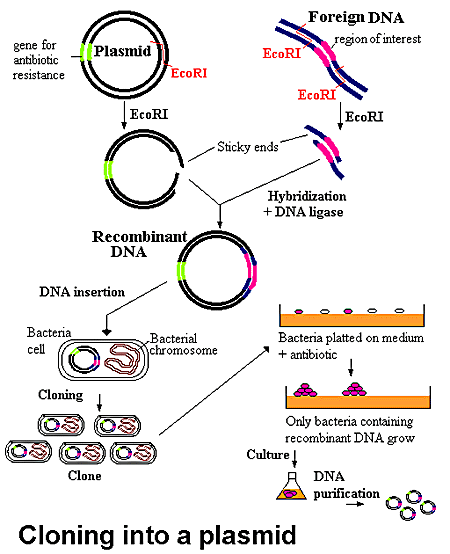Cloning into a Plasmid
Legend:
Process by which a plasmid is used to import recombinant DNA into a host cell for cloning.
Many diseases are caused by gene alterations. Our understanding of genetic diseases was greatly increased by information gained from DNA cloning. In DNA cloning, a DNA fragment that contains a gene of interest is inserted into a cloning vector or plasmid.
The plasmid carrying genes for antibiotic resistance, and a DNA strand, which contains the gene of interest, are both cut with the same restriction endonuclease. The plasmid is opened up and the gene is freed from its parent DNA strand. They have complementary "sticky ends." The opened plasmid and the freed gene are mixed with DNA ligase, which reforms the two pieces as recombinant DNA.
Plasmids + copies of the DNA fragment produce quantities of recombinant DNA.
This recombinant DNA stew is allowed to transform a bacterial culture, which is then exposed to antibiotics. All the cells except those which have been encoded by the plasmid DNA recombinant are killed, leaving a cell culture containing the desired recombinant DNA.
DNA cloning allows a copy of any specific part of a DNA (or RNA) sequence to be selected among many others and produced in an unlimited amount. This technique is the first stage of most of the genetic engineering experiments: production of DNA libraries, PCR, and DNA sequencing.
Source: Access Excellence
